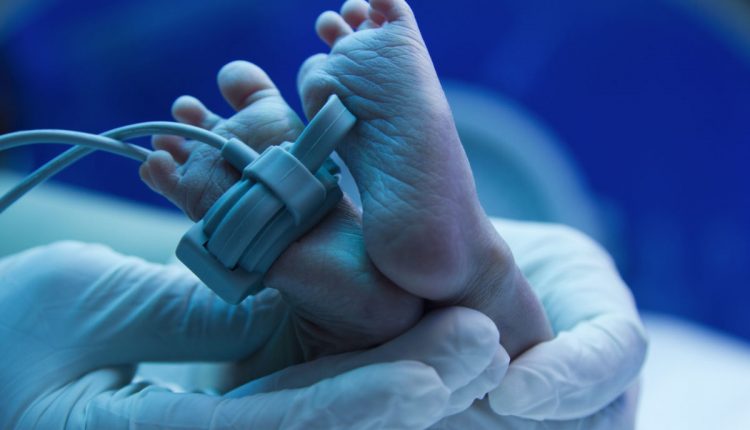
Neonatal hepatitis: symptoms, diagnosis and treatment
Neonatal hepatitis is an inflammation of the liver whose cause often remains unknown. The most common signs and symptoms include jaundice, fever, and an enlarged liver and spleen
The term neonatal hepatitis refers to an inflammation of the liver that occurs in the first or second month of life
The frequency of neonatal hepatitis is estimated to be around 1 in 2500 live births.
The causes of neonatal hepatitis are not well understood.
Approximately 20% of infants with neonatal hepatitis are infected with a virus such as cytomegalovirus, measles virus, rubella virus, enterovirus a hepatitis virus (A, B and C).
Some non-viral infections such as syphilis and toxoplasmosis can also cause neonatal hepatitis
In the remaining 80% of cases, the cause may be a metabolic defect, a genetic alteration or infection with a virus that we cannot yet identify.
Newborns have immature liver function.
Even bile, which normally flows from the liver into the intestine via the bile ducts, tends to stagnate (cholestasis) in the first few days of life.
In addition, any insult to the neonatal liver results in a further exacerbation of bile stagnation with increased bilirubin levels in the blood.
This increase is manifested by the appearance of jaundice, i.e. a yellowish discolouration of the skin and sclerae (the whites of the eyes).
Hepatitis may be present without any manifestation.
When symptoms do appear, they include:
- Jaundice;
- Fever;
- Liver and spleen increased in size (hepatomegaly and splenomegaly);
- Poor growth (weight);
- Elevated liver enzyme values (transaminases);
- Abdominal pain;
- Reduced food intake and vomiting;
- Diarrhoea, clay-coloured stools (hypocolic).
In more severe cases of neonatal hepatitis, the following may be observed:
- Ecchymosis (bruising) caused by poor production of clotting factors by the liver;
- Ascites (accumulation of fluid inside the abdominal cavity).
The first step is early recognition of jaundice. In addition, enlargement of the liver or spleen may be present.
Therefore, any newborn presenting jaundice beyond 14 days of age must undergo blood tests (assay of liver enzymes and coagulation factors, tests for a possible viral cause).
The structure of the liver, ducts and surrounding blood vessels can be assessed, albeit roughly, by ultrasound.
A liver biopsy is essential.
During the biopsy, a needle and syringe are used to remove a small sample of liver tissue, which is then studied under a microscope.
The biopsy quite often shows four or five liver cells combined into one large cell that still functions but not as a normal liver cell.
This type of neonatal hepatitis is called giant cell hepatitis.
Liver biopsy makes it possible to rule out other liver diseases such as biliary tract atresia, which gives symptoms very similar to neonatal hepatitis.
Finally, the use of genetic tests is essential, thanks to increasingly comprehensive, reliable and reproducible panels.
If neonatal hepatitis is not properly treated, it can lead to various complications:
- Encephalitis: often caused by cytomegalovirus, it is characterised by poor brain development and cerebral palsy;
- Liver cirrhosis: almost 20% of children who contract hepatitis at birth are at risk of developing chronic liver disease and cirrhosis at a later age;
- Vitamin deficiencies: the absorption of vitamin A, vitamin D, vitamin E and vitamin K is interrupted, resulting in health problems such as reduced growth in weight and stature, rickets, reduced visual acuity, skin lesions and reduced ability to heal wounds;
- Skin diseases: the reduced ability of the liver to eliminate toxins via the bile can cause prolonged irritation of the skin;
- Liver cholestasis: can lead to a reduced ability of the intestine to absorb vitamins.
There is no specific treatment for neonatal hepatitis.
Treatment is aimed at relieving symptoms.
Special attention must be paid to the nutritional needs and diet of newborns.
Special infant formula may be prescribed.
For instance, fat malabsorption can be corrected with formulas that contain easily digestible medium-chain triglycerides (MCT).
Supplements with fat-soluble vitamins (vitamins A, D, E and K) are generally prescribed because they can help promote growth and development of the infant.
Itching, a cause of irritability in the infant, can be partly controlled by ursodesoxycholic acid, which improves liver function, as well as rifampicin, which facilitates bile acid detoxification and bilirubin elimination.
A separate chapter concerns prevention, in the presence of maternal HBV infection, by administering immunoglobulins and anti-HBV vaccine to the infant in the first hours of life.
In most cases hepatitis tends to improve in the first six months of life.
But, if the infection is caused by the hepatitis B or C virus, it is likely to lead to cirrhosis with the need for a liver transplant, a compulsory surgical choice for children who develop liver failure that cannot be cured by medication or simpler surgery.
Read Also:
Emergency Live Even More…Live: Download The New Free App Of Your Newspaper For IOS And Android
Hepatitis A: What It Is And How It Is Transmitted
Hepatitis B: Symptoms And Treatment
Hepatitis C: Causes, Symptoms And Treatment
Hepatitis D (Delta): Symptoms, Diagnosis, Treatment
Hepatitis E: What It Is And How Infection Occurs
Hepatitis In Children, Here Is What The Italian National Institute Of Health Says
Acute Hepatitis In Children, Maggiore (Bambino Gesù): ‘Jaundice A Wake-Up Call’
Nobel Prize For Medicine To Scientists Who Discovered Hepatitis C Virus
Hepatic Steatosis: What It Is And How To Prevent It
Acute Hepatitis And Kidney Injury Due To Energy Drink Consuption: Case Report
The Different Types Of Hepatitis: Prevention And Treatment
Acute Hepatitis And Kidney Injury Due To Energy Drink Consuption: Case Report
New York, Mount Sinai Researchers Publish Study On Liver Disease In World Trade Center Rescuers
Acute Hepatitis Cases In Children: Learning About Viral Hepatitis
Hepatic Steatosis: Causes And Treatment Of Fatty Liver
Hepatopathy: Non-Invasive Tests To Assess Liver Disease
Liver: What Is Non-Alcoholic Steatohepatitis



